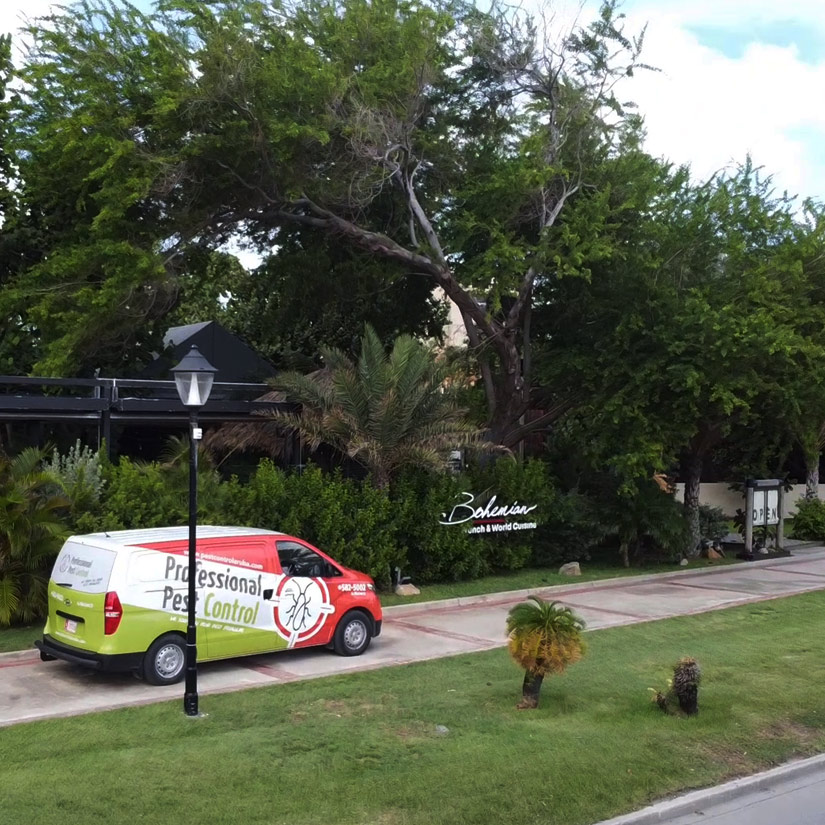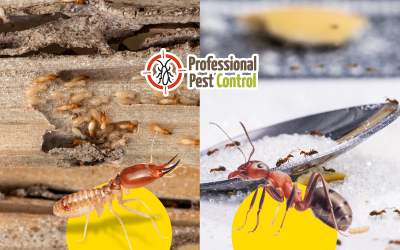Is it ants or termites crawling around your home? Learning to identify them is vital as it affects not just your home’s health but your approach to pest control. In this post, we’ll guide you through explicit identifiers to tell these insects apart and explain why getting it right matters.
Key Differences Between Termites and Ants
- Physical Traits: Termites have straight antennae, a thick waist, and wings of equal size. In contrast, ants have bent antennae and a narrow waist, and their wings vary in size.
- Behavioral Clues: Termites feed on wood, causing severe structural damage. Ants, while they can be a nuisance, they only search for food and may contaminate it.
- Signs of Infestation: Termites often leave behind mud tubes, hollow-sounding wood, and piles of discarded wings. Ant infestations are more accessible, with visible trails and mounds near entry points.
- Impact on Your Home: Termites pose a significant risk due to their wood-destroying habits, while ants can cause problems by nesting in walls and foundations.
Wanna know more about ants? Read our article here: From Prevention to Elimination: Your Complete Guide to Ant Control.
Quick Tips for Identifying Termites and Ants in the Caribbean
- Look for Mud Tubes: Termites create mud tubes to protect themselves while moving between their nests and food sources.
- Check for Discarded Wings: Both termites and ants shed wings after swarming, but termite wings are of equal size, while ant wings are different sizes.
- Tap Wood Surfaces: Hollow-sounding wood could indicate a termite infestation. Ants don’t usually cause wood to sound hollow.
- Observe Nesting Habits: Termites tend to hide in wood or underground, while ants often create visible mounds or trails.
- Use a Flashlight at Night: Inspect potential entry points around your home, like windowsills and doorframes, to spot termites or ants.
Top 4 Facts About Termites and Ants
- Diet Differences: Termites consume wood, threatening structures, while ants are more likely to feed on food scraps and other insects.
- Wing Structures Vary: Termites have wings of the same size, whereas ant wings differ in size, which is a helpful identification clue.
- Preferred Habitats: Termites thrive in dark, moist environments and often remain hidden in walls or underground. Ants can nest in visible areas both inside and outside your home.
- The Silent Destroyer: Termites often go unnoticed until significant damage is done, earning them the nickname “silent destroyers,” whereas ants are typically more visible.
Read here to get the upper hand when dealing with termites: Winning the Battle Against Termites: Is It Really Possible?
Termites vs. Ants: A Handy Comparison Guide
| Feature | Termites | Ants |
| Antennae | Straight | Bent |
| Waist | Thick | Narrow |
| Wings | Equal size | Forewings larger than hind wings |
| Eating Habits | Wood | Food scraps, insects |
| Nesting | In wood, underground | In mounds, walls, and visible trails |
| Signs of Infestation | Mud tubes, hollow wood, discarded wings | Visible trails, mounds, scattered wings |
What to Do If You Spot Signs of Termites or Ants
- Conduct a Visual Inspection: Check your home for signs such as mud tubes, hollow-sounding wood, ant trails, and discarded wings.
- Document Evidence: Take photos of areas with signs of infestation to help with identification.
- Call Professional Pest Control: Contact us for a comprehensive inspection and accurate identification. We can determine the type and extent of the infestation.
- Follow Our Expert Recommendations: Our team can implement the appropriate treatment plan tailored to your pest problem.
- Prevent Future Infestations: We’ll provide guidance on sealing entry points, reducing moisture around the home, and regular inspections to keep pests at bay.
Check out this article to learn more about our products and services: DIY Pest Control Made Easy with Professional Pest Control NEW Store in Aruba.
Keep Your Home Safe with Professional Pest Control
Identifying the differences between termites and ants is key to protecting your home from potential damage. Our team at Professional Pest Control is here to help with accurate identification and effective treatment plans. Don’t wait until the damage is done—reach out to us today for a thorough Free inspection and peace of mind.



